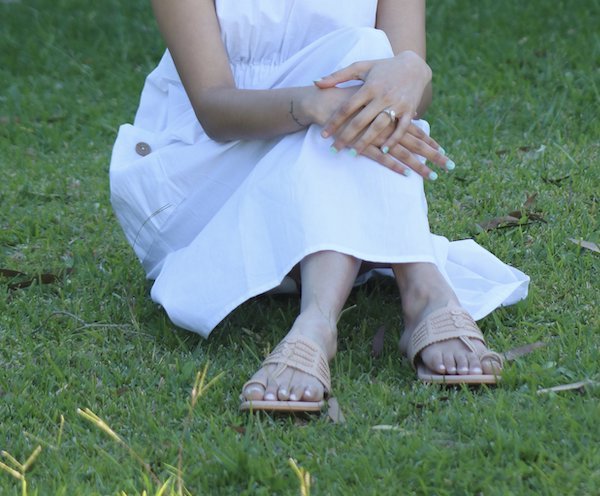
Introduction
The history of handmade sandals is a testament to the timeless artistry of craftsmanship, reflecting cultural traditions and individuality amidst the modern era's relentless push for mass production and fast fashion.
In today's world, where mass-produced items and fast fashion rule the industry, handmade products are a refreshing reminder of the enduring worth of craftsmanship and authenticity.
Among these handcrafted gems, handmade sandals shine as a symbol of comfort, style, and sustainability. They represent a footwear choice that goes beyond passing trends and holds special appeal for individuals who prioritize quality over quantity.
Environmental Impact:
When we take a moment to reflect on the ecological repercussions of our choices, the advantages of opting for handmade sandals over mass-produced, factory-made shoes become clear.
The term "carbon footprint" encapsulates the overall quantity of greenhouse gases, primarily carbon dioxide (CO2), that are released into the atmosphere as a result of various human activities, encompassing manufacturing, transportation, and energy consumption. These emissions are substantial contributors to global warming and the persistent challenge of climate change.
A study conducted by MIT further underscores this point, unveiling a startling fact: a single pair of new running shoes contributes a substantial 14 kilograms of CO2 emissions.
This staggering statistic sheds light on the inherent environmental benefits associated with choosing handmade sandals as a more sustainable footwear option.
To put this into perspective, the athletic shoe industry alone generates approximately 4 million metric tonnes of CO2 emissions every year.
Additionally, it's essential to recognize that leather shoe production entails a water-intensive process, consuming roughly 2,113 gallons of water per pair.
Consider also the water requirements of the animals raised for leather—water for drinking and food production. In light of these considerations, it's evident that eco-conscious alternatives, such as vegan footwear made from synthetic materials, as well as the meticulous craftsmanship behind handmade sandals, represent more environmentally responsible choices.
In a world where sustainability and customization increasingly matter, it's noteworthy that 48% of consumers between the ages of 16 and 24 express a keen interest in personalized footwear.
Handmade sandals not only align with this growing desire for individuality but also contribute to a greener, more environmentally conscious future.
In this article, we will delve into key benefits of handmade sandals, shedding light on why handmade sandals have gained a reputation as a sensible and stylish footwear option.
1. Top Quality Raw Materials:
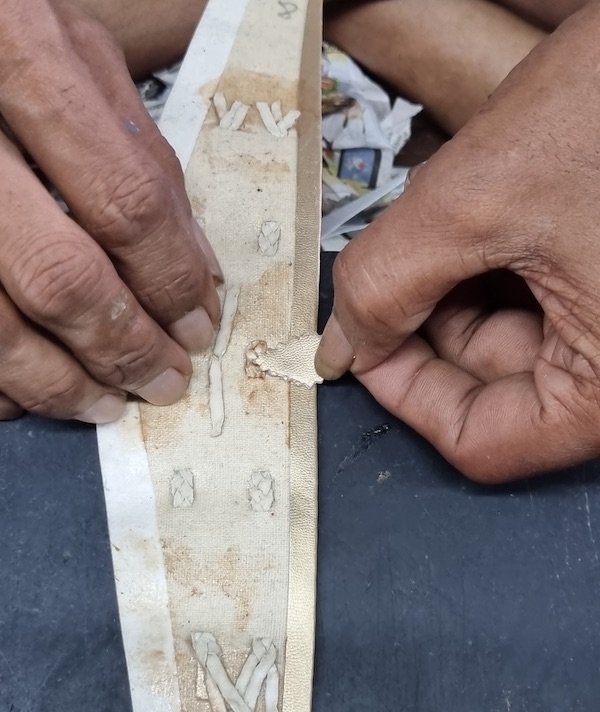
Handmade sandals emphasize the careful selection of premium raw materials, aiming to deliver the utmost in craftsmanship and longevity. These sandals can be painstakingly crafted from an array of top-tier materials, each boasting its own set of distinctive advantages.
Let's take a closer look at some of the top-tier materials commonly utilized in crafting handmade sandals:
Premium Leather:
Handmade sandals often take advantage of high-quality leather, such as full-grain or vegetable-tanned leather. These types of leather are celebrated for their remarkable durability, comfort, and the ability to acquire a captivating patina as they age, enhancing both the visual appeal and longevity of these carefully handcrafted footwear creations.
Suede:
Suede leather is valued for its softness and luxurious feel. It's often used for lining or as an upper material in sandals, providing a comfortable fit and an elegant appearance.
Cork:
Cork is a sustainable and eco-friendly material used for footbeds in many handmade sandals. It offers excellent cushioning and support while being lightweight and environmentally friendly.
Vibram Rubber:
Some handmade sandals feature Vibram rubber soles, which are known for their durability and traction. These soles provide excellent grip and are suitable for outdoor activities.
Canvas:
When it comes to the upper portion of sandals, canvas reigns as a popular choice. This breathable and lightweight material offers exceptional comfort, ease of maintenance, and the versatility to be dyed in an array of colors and patterns, allowing for a wide range of stylish designs.
Rope:
For straps or soles, handmade sandals occasionally employ rope or woven materials like jute or hemp. These selections not only excel in durability but also lend a distinctive rustic charm to the sandals, making them stand out as unique and environmentally friendly options.
Exotic Leathers:
In the realm of high-end handmade sandals, the use of exotic leathers such as ostrich, alligator, or snake is not uncommon. These materials are celebrated for their one-of-a-kind textures and luxurious appeal, elevating the sandals to the pinnacle of sophistication and style.
Sustainable Fabrics:
Environmentally conscious brands may use sustainable materials like organic cotton, hemp, or recycled materials for the straps and uppers of their sandals.
Metal Hardware:
Premium metal hardware, such as brass or stainless steel buckles and rivets, is often used for added durability and a polished look.
Sheepskin:
Sheepskin is known for its softness and moisture-wicking properties. It's sometimes used for lining or footbeds in sandals to enhance comfort.
Wood:
Wooden soles or components can provide a unique and natural aesthetic to handmade sandals. They are often hand-carved or shaped to create custom designs.
Gemstones and Embellishments:
Some high-end sandals feature gemstones, beads, or other decorative elements that are carefully hand-embedded into the straps, adding a touch of luxury and uniqueness.
Faux Leather:
For individuals in search of cruelty-free and vegan options, faux leather emerges as a compelling alternative to traditional leather. It has garnered acclaim for its durability, low maintenance demands, and its exceptional ability to mirror the aesthetic appeal of genuine leather, all while eschewing the use of animal-derived materials. This synthetic material is causing a significant stir within the fashion world for all the right reasons.
Did you know that it takes an astonishing 2,113 gallons of water to manufacture a single pair of leather shoes? This extensive water consumption extends beyond leather production alone, as the animals reared for leather also necessitate substantial water resources for their sustenance and the cultivation of their food.
In this era of heightened environmental consciousness, environmentally aware consumers are gravitating towards more sustainable alternatives, with vegan shoes leading the way.
At Kosh-a, our unwavering commitment to sustainability and ethical choices is evident in our footwear. We've opted for premium faux leather materials in crafting our sandals, ensuring that they not only flawlessly replicate the appearance and texture of genuine leather but also align with our steadfast dedication to animal welfare and environmental responsibility. By choosing our sandals, you can revel in both style and comfort while making a mindful, eco-friendly decision that honors our planet and its inhabitants.
2. Greater Durability and Resistance:
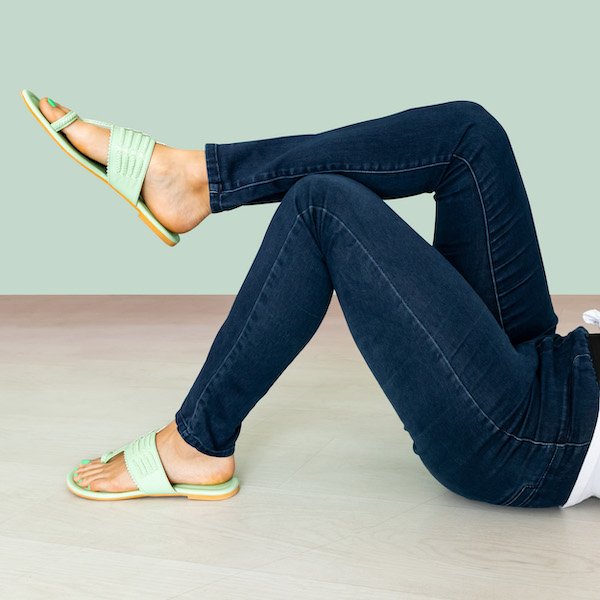
The longevity of sandals is closely linked to the quality of materials used in their construction. High-quality materials, by nature, exhibit greater resilience and resistance to damage, allowing them to endure the typical wear and tear that accompanies everyday use.
Consequently, when your sandals are crafted from these superior materials, they won't succumb to wear and tear as swiftly as those fashioned from cheaper or lower-grade alternatives. This translates into an extended period of use without the need for frequent replacements.
Faux leather sandals, often referred to as synthetic leather sandals, are renowned for their exceptional durability. This distinction has propelled them into the limelight as a preferred option for individuals in search of a more sustainable and animal-friendly alternative to genuine leather.
By choosing these sandals, you're not only embracing an ethical decision but also guaranteeing that your investment in footwear experiences a sustainable and enduring journey, aligned with the principles of repurposing and recycling.
Here are some key points regarding the durability of faux leather sandals:
Resistant to Moisture:
Faux leather sandals are typically made from synthetic materials such as polyurethane (PU) or polyvinyl chloride (PVC). These materials are inherently resistant to moisture, unlike genuine leather, which can become damaged when exposed to water. Faux leather sandals can withstand wet conditions, making them suitable for various outdoor activities and easy to clean.
Less Prone to Cracking:
Faux leather tends to be more resistant to cracking and peeling compared to genuine leather. Over time, genuine leather can develop cracks and lose its suppleness if not properly cared for, but faux leather maintains its smooth appearance and flexibility for longer periods.
Low Maintenance:
Faux leather sandals are relatively low maintenance. They don't require special leather care products, conditioning, or frequent polishing, which can be necessary for genuine leather. This makes them a convenient option for people looking for durable footwear without the hassle of extensive upkeep.
Resistance to Wear and Tear:
Well-constructed faux leather sandals can be highly resistant to wear and tear. The use of high-quality synthetic materials and good craftsmanship ensures that these sandals can withstand the daily rigors of walking, standing, and other activities without showing signs of significant damage.
Longevity:
With proper care, faux leather sandals can have a long lifespan. Regular cleaning and occasional maintenance can help prolong their durability and appearance. It's important to follow the care instructions provided by the manufacturer to maximize their longevity.
3. Most Optimal Footwear:

Handmade sandals can be considered one of the most optimal footwear choices for several reasons, although their suitability may vary depending on individual preferences and needs. Here are some reasons why handmade sandals can be an excellent choice:
Custom Fit:
Handmade sandals are often crafted to fit the specific measurements and contours of your feet. This personalized fit can provide better comfort and support compared to mass-produced footwear.
Natural and Sustainable Materials:
Numerous handmade sandals are meticulously crafted using high-quality, natural materials, including genuine leather, suede, cork, and even eco-friendly faux leather. These materials are renowned for their breathability, helping to maintain a comfortable foot temperature and reducing the likelihood of excessive sweating and unpleasant odors.
Durability:
Handmade sandals are typically built to last. Skilled artisans take time and care to ensure that the materials are stitched, glued, or woven together in a way that maximizes durability. This can result in a longer lifespan for your footwear.
Artisan Craftsmanship:
Handmade sandals often showcase the skill and artistry of the person who crafted them. The attention to detail and unique design elements can make them aesthetically pleasing and add a personal touch to your style.
Support and Comfort:
Many handmade sandals are designed with arch support and ergonomic considerations in mind. This can help reduce foot fatigue, discomfort or any other specific foot conditions or require orthopedic support.
Eco-Friendly:
Handmade sandals, when made from sustainable materials and by ethical practices, can be a more environmentally friendly choice compared to mass-produced, synthetic footwear. Supporting artisans who prioritize eco-conscious materials and production methods can have a positive impact.
Versatility:
Handmade sandals often come in a variety of styles and designs, suitable for various occasions. From casual flip-flops to more formal leather sandals, there's likely a handmade option to match your needs.
Repairability:
Many handmade sandals are designed to be repairable. If a component wears out or becomes damaged, it may be possible to have the sandals repaired rather than replacing them entirely, further extending their lifespan.
4. Originality and Exclusivity:
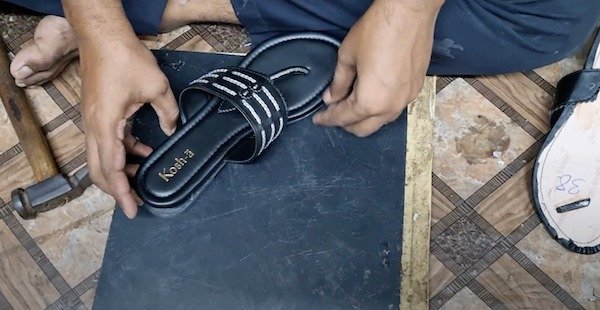
Handmade sandals are renowned for their inherent uniqueness, offering a level of exclusivity and originality that mass-produced footwear simply cannot match. Each pair of handmade sandals is a testament to the artisan's individual craftsmanship and creativity.
At Kosh-a, this commitment to originality and exclusivity is at the core of our brand identity. Our artisans pride themselves on crafting sandals that not only meet high-quality standards but also exude a distinct character and charm. When you choose Kosh-a handmade sandals, you're not just buying footwear; you're acquiring a piece of artistry and individuality.
This exclusivity extends beyond aesthetics. Since handmade sandals are often produced in smaller quantities, you're less likely to see others wearing the exact same pair. This uniqueness allows you to express your personal style with confidence, knowing that your footwear is a one-of-a-kind creation. It's this special touch that sets handmade sandals apart and makes them a cherished addition to any wardrobe.
5. Traditionality:
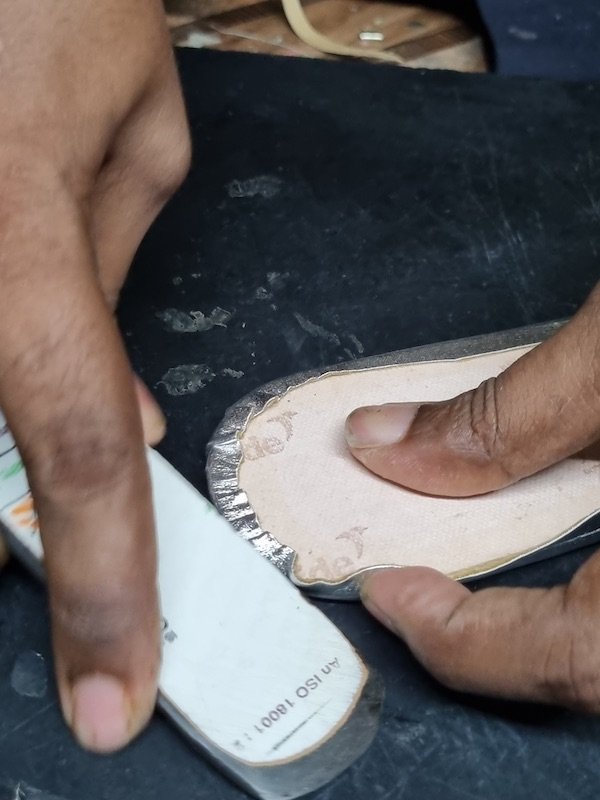
Embracing handmade footwear is a means of upholding a rich tradition that celebrates the artistry and exceptional craftsmanship of skilled artisans. For centuries, diverse cultures from around the world have been crafting handmade footwear, each with its own unique techniques and designs.
These traditions go beyond just creating shoes; they encapsulate the history, culture, and heritage of their respective regions.
At Kosh-a, we pay sincere homage to the traditional Kolhapuri chappals, which originate from the Kolhapur region of India. These sandals boast a storied history, with artisans passing down their invaluable skills from one generation to the next. By meticulously crafting modern variations of Kolhapuri chappals, Kosh-a is not only dedicated to preserving this centuries-old tradition but also injecting it with a contemporary flair.
6. Cost Effectiveness:

While handmade sandals may initially come with a slightly higher price tag than their mass-produced counterparts, it's crucial to see the bigger picture and recognize their long-term value. These sandals are a testament to meticulous craftsmanship, premium materials, and artisanal expertise, factors that inherently endow them with exceptional durability.
This durability is the linchpin of their cost-effectiveness. Skilled artisans invest painstaking effort in their creations, employing age-old techniques that result in footwear capable of enduring the rigors of time. In essence, the initial investment in handmade sandals pales in comparison to the extended lifespan and enduring quality they provide, making them a wise and sustainable choice in the long run.
Unlike cheaper, mass-produced alternatives that may wear out or fall apart relatively quickly, handmade sandals are built to last. This longevity is not only a testament to the craftsmanship but also translates to cost savings over the years.
Another aspect to consider is repairability. Many handmade sandals are designed with the possibility of repairs in mind. If a component, such as a sole or strap, becomes damaged, it can often be skillfully fixed by a cobbler or the original artisan. This means that you can extend the lifespan of your sandals without needing to frequently replace them, ultimately reducing long-term expenses.
7. Exceptional Comfort:
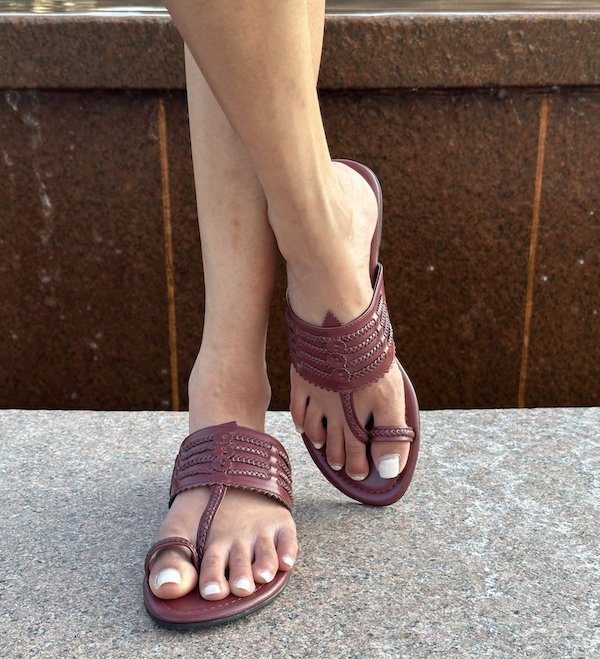
Handmade sandals are renowned for their exceptional comfort, and this is a key factor that sets them apart from mass-produced footwear. The emphasis on comfort begins with the personalized craftsmanship that goes into each pair.
Another aspect that enhances comfort in handmade sandals is the attention to ergonomic design. Many artisans incorporate features like arch support and cushioning, which are essential for maintaining proper foot alignment and reducing fatigue, especially during long walks or extended wear.
The result of these combined efforts is a pair of sandals that not only look stylish but also prioritize your well-being. They provide the comfort and support necessary for a pleasant walking experience, making them an excellent choice for those who value both style and foot health.
By investing in handmade sandals that cater to your specific needs, you can enjoy exceptional comfort throughout the day, whether you're strolling through the city or relaxing on a vacation.
8. Versatile Designs:
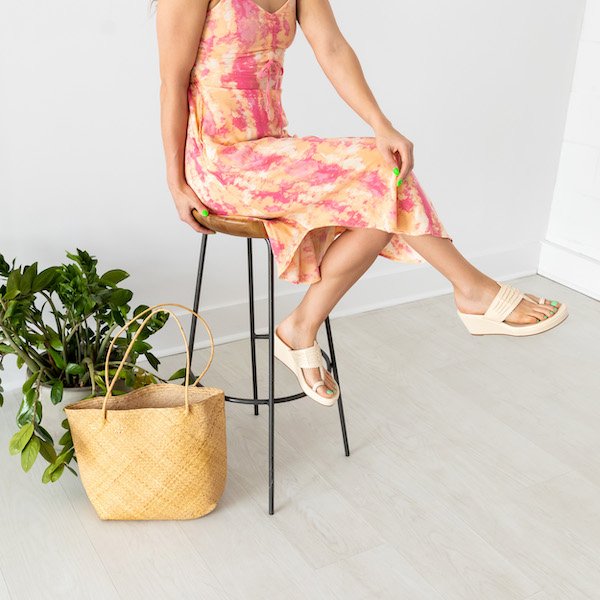
Handcrafted sandals are celebrated for their versatile designs, which provide a wide range of options to cater to individual style preferences. Artisans often offer a diverse selection of designs, colors, and patterns, allowing customers to express their unique sense of style.
One of the notable advantages of handmade sandals is the artistic creativity infused into each pair. Skilled artisans take pride in their work, often incorporating intricate detailing, handwoven patterns, and decorative elements that set each sandal apart. This level of craftsmanship not only enhances the aesthetics but also allows wearers to make a fashion statement.
9. Blending Well with Casual Outfits:
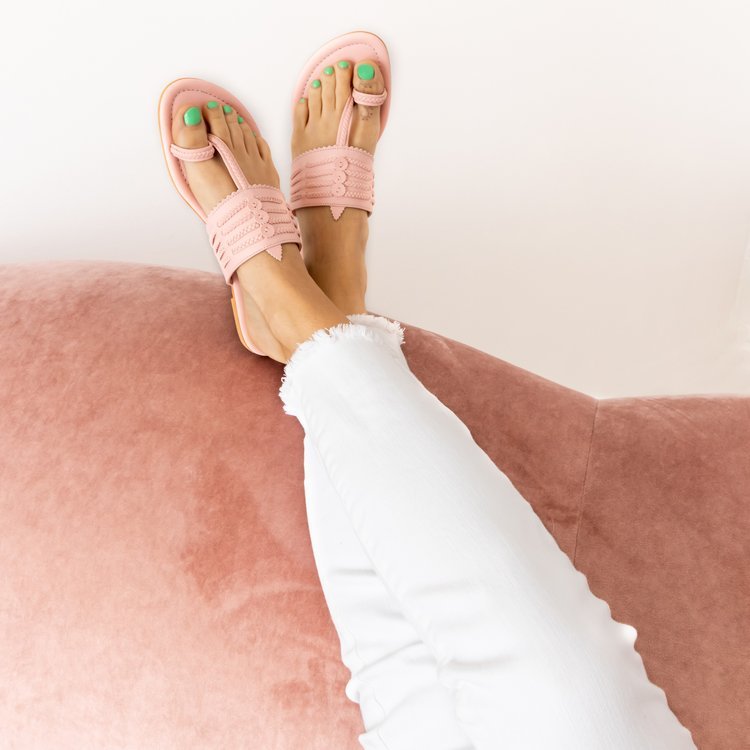
Handmade sandals are known for their versatility and their ability to seamlessly complement casual attire. These sandals are a versatile addition to your wardrobe, capable of elevating the style of various relaxed outfits, from loungewear to jeans.
The appeal of handmade sandals lies in their ability to strike a balance between comfort and aesthetics. Whether you're dressing down in comfortable loungewear or going for a more laid-back look with jeans and a t-shirt, these sandals provide a stylish and comfortable choice for your feet. The craftsmanship that goes into each pair often includes unique design elements that can add a touch of flair to even the most relaxed ensembles.
Furthermore, the absence of a specific material like leather means that handmade sandals can cater to a broader range of style preferences and outfit choices. Their versatility in design, color, and pattern options ensures that you can find a pair that effortlessly complements your casual wardrobe, regardless of the materials used.
In summary, handmade sandals, with their diverse designs and comfortable fit, have the unique ability to blend seamlessly with casual outfits of all kinds. Whether you're enjoying a cozy day at home or heading out for a casual outing with friends, these sandals are a versatile choice that can enhance your style while prioritizing comfort.
FAQs
Why are handmade shoes so expensive?
Handmade shoes are expensive because they require skilled craftsmanship, high-quality materials, and a labor-intensive production process.
What is the longest-lasting shoe material?
Leather is often considered the longest-lasting shoe material due to its durability and ability to develop a desirable patina over time.
How long does it take to make a handmade shoe?
It typically takes several hours to several days to craft a single pair of handmade shoes, depending on complexity and artisan skill.
Are handmade shoes worth it?
Handmade shoes are worth it for those seeking superior craftsmanship, unique design, and long-lasting quality, but they come at a higher price.
How much does it cost to have handmade shoes?
The cost of handmade shoes can vary widely, from hundreds to thousands of dollars, depending on the brand, materials, and craftsmanship involved.
How long do hand-made shoes last?
Handmade shoes can last for many years with proper care, often outlasting mass-produced footwear due to their superior construction and materials.


 Sep 09, 2023
Sep 09, 2023
 Aug 26, 2023
Aug 26, 2023
